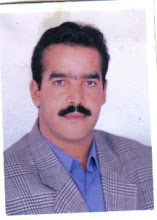Oral intelligibility
This is to summarize the presentation that was delivered by Dr. Scott G. Stevens (July 2, 2008, from 2:37 to 5:05 / CSB 002)
Intelligibility: comprehensibility
Intelligible: understandable, capable of being understood.
Dr. Stevens was extremely successful in putting his ideas across and his presentation was really interesting and informative.
At the beginning, Dr. Stevens talked about the dichotomy of fluency and accuracy. Which one is more important than the other? For him, they are all equally important. When speaking a language, one has to be confident as well as competent. He has to know what to say and how to say it.
After that, Dr. Stevens talked about the aspects of oral intelligibility. He summarized them in six points:
At the beginning, Dr. Stevens talked about the dichotomy of fluency and accuracy. Which one is more important than the other? For him, they are all equally important. When speaking a language, one has to be confident as well as competent. He has to know what to say and how to say it.
After that, Dr. Stevens talked about the aspects of oral intelligibility. He summarized them in six points:
1- Pronunciation: phonemes and phonetics
A phoneme is the smallest unit that can carry meaning. It is a speech sound that distinguishes one word from another, e.g. the sounds “d” and “t” in the words “bid” and “bit”.
Phonetics is the system or pattern of speech sounds used in a language. It’s also the scientific study of speech sounds and how they are produced.
A phoneme is the smallest unit that can carry meaning. It is a speech sound that distinguishes one word from another, e.g. the sounds “d” and “t” in the words “bid” and “bit”.
Phonetics is the system or pattern of speech sounds used in a language. It’s also the scientific study of speech sounds and how they are produced.
2- Stress: Dr. Stevens defined stress as the emphasis placed on a sound or a syllable by pronouncing it more loudly or forcefully than those surrounding it in the same word or phrase. It’s so vital in oral intelligibility. Dr. Stevens kept saying during the presentation that English, Arabic and German are stress-timed languages. Other languages like Italian and Spanish are syllable-times languages. Consider the stress placement on the words “geography” and “geographic” which changes as a suffix is added.
3- Intonation (tono): It is the rising and falling pitch of the voice when somebody says a word or a syllable. It’s the music or melody of a language. It is extremely important in oral intelligibility. Consider this example: “She wants me to talk to her”. The meaning change depending on how you read the sentence and the melody you give it.
4- Rhythm: It is defined as the pattern of sounds that characterizes a language, dialect and accent. Look at the following sentences; they have three “beats” no matter how many words they include:
Ø Birds eat worms.
Ø The birds ear the worms.
Ø The birds will have eaten the worms.
In this regard, Dr. Stevens shed light on linking. He said that linking is the blending of words within a sentence or a phrase. But this blending is not done at random. He also talked about reduction which means the decreasing of something in size, number, etc. and it also means simplification. So, when we reduce something, we make it simpler. Dr. Stevens urged us to teach our students reduced forms and he said that reduced forms are not informal as most EFL teachers think. In fact, when he was talking to us, he was using reduced forms all the time.
Ø Birds eat worms.
Ø The birds ear the worms.
Ø The birds will have eaten the worms.
In this regard, Dr. Stevens shed light on linking. He said that linking is the blending of words within a sentence or a phrase. But this blending is not done at random. He also talked about reduction which means the decreasing of something in size, number, etc. and it also means simplification. So, when we reduce something, we make it simpler. Dr. Stevens urged us to teach our students reduced forms and he said that reduced forms are not informal as most EFL teachers think. In fact, when he was talking to us, he was using reduced forms all the time.
5- Projection or volume: This refers to the loudness of sound. It is highly expressive and significant. As a matter of fact, we, teachers, should pay a great attention to the volume of our voices and give more eye contact to our students and teach them to do so as well.
6- Nonverbal communication: It is communication by other means than by using words, e.g. through facial expressions, hand gestures and tone voice. But a great attention and care must be given to this aspect of oral intelligibility. Nonverbal communication is not the same wherever you go. A gesture may acceptable in one culture but offensive in another.
Proxemics has to do with the distance individuals maintain between each other in social interaction and its significance. This also differs from one culture to another.
At 4:00 pm, we had a break of 10 minutes then the second part of the presentation was very practical. We were given a lot of applications about oral intelligibility. What I enjoyed most in those workshops was playing with kazoos. It was very funny. We really learned and played. At the end, Dr. Stevens gave us some handouts containing interesting and useful materials for both elementary and secondary school EFL teachers.
Thanks so much Dr. Stevens. I learned a lot from you. I am looking forward to meeting you again.
Thanks so much Dr. Stevens. I learned a lot from you. I am looking forward to meeting you again.


No comments:
Post a Comment